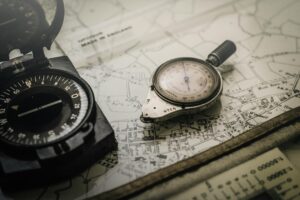Haben Sie sich jemals gefragt, wie Ihr GPS-Tracker, Smartphone oder...
WeiterlesenHave you ever wondered how your GPS tracker, smartphone or car magically knows exactly where you are, whether you’re navigating to a new restaurant or finding your way home? The answer lies in a remarkable technology called GPS, the Global Positioning System. In this post, we’ll explore the basics of how GPS works and reveal the secret behind this now-ubiquitous technology.
What is GPS?
GPS is a network of satellites that orbit the Earth and constantly send out signals containing precise time and position information. Originally developed by the United States Department of Defense for military use, GPS has become an essential tool for civilian navigation, mapping, and countless other applications.
In fact, the term GPS as it is commonly used is not entirely correct. Because GPS is just one of several satellite systems that are summarized under the abbreviation GNSS, Global Navigation Satellite System. In addition to the American GPS, there are other satellite systems that can be used by the devices. These include, among others, the Galileo (Europe), GLONASS (Russia) and BeiDou (China) systems.
However, since GPS is a common generic term and is often used as a replacement for GNSS, we will also use the term GPS in the following.
Trilateration: The Key to Determining Your Position
At its core, GPS relies on a technique called trilateration to determine your exact location. Trilateration is a method of determining position based on the distances from known points – in this case the GPS satellites – to the unknown point, which is your position on the Earth’s surface.

The role of satellites
To perform trilateration, your device needs signals from at least four GPS satellites. Why four? Because each satellite sends signals that contain its exact position and the time the signal was sent. By comparing the time it takes for these signals to reach your device and combining them with the known positions of the satellites, your device can calculate its distance from each satellite.
Calculating your position
Once your device has determined its distance from at least four satellites, it uses this information to triangulate your position on the Earth’s surface. By overlapping the spheres representing the possible distances from each satellite, your device can determine your position with remarkable accuracy.
Factors affecting the accuracy of GPS
Although GPS is incredibly precise, several factors can affect its accuracy. Buildings, trees and other obstacles can block signals from GPS satellites, resulting in errors in positioning. In addition, atmospheric conditions and the geometry of satellite positions relative to your location can affect accuracy.
The future of GPS
As technology continues to evolve, GPS continues to evolve. Advances in satellite technology, improved algorithms and the integration of complementary positioning systems promise to further improve the accuracy and reliability of GPS in the coming years.
Conclusion
The next time you wonder how your device guides you to your destination with pinpoint precision, think about the remarkable technology working in the background. GPS has transformed the way we move in the world, and its influence on our daily lives continues to grow.
So next time you ask yourself, “How does my device know where I am?” – have a new appreciation for the wonders of GPS.
More blog articles
Der Vergleich: Smartphones vs. GPS-Tracker – welches Gerät ist genauer?
Während sich viele von uns beim GPS auf ihre Smartphones...
WeiterlesenMehr als GNSS/GPS: Alternative Systeme zur Positionsbestimmung auf der Erde
Wenn wir an Standortbestimmung denken, kommen uns häufig globale Navigationssatellitensysteme...
Weiterlesen



